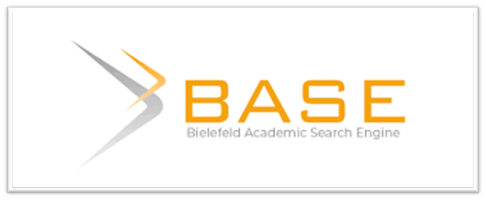INCORPORATING PROJECT-BASED LEARNING (PBL) INTO A UNIVERSITY SPEAKING CLASSROOM: WHY AND HOW?
Kata Kunci:
project-based learning, speaking skill, a university classroom.Abstrak
Learning a language means learning thelanguage knowledge (vocabulary and grammar) and the language skills (reading, listening, speaking and writing). Of all the four skills, speaking skill is considered to be the most favourite and challenging one.It contains a complex process of constructing meaning and requires the language learners to produce linguistically and pragmatically correct utterances. To achieve such goals, a teacher who teaches speaking skills especially at a university level classroom should use a meaningful, appropriate and a challenging teaching method or technique. One of the methods that attract many language teachers’ interests currently is project-based learning. Project-based learning is a teaching method in which the students gains knowledge and skills byworking for an extended period of time to investigate and respond to a complex question, problem, or challenge. It empowers learners to pursue content knowledge on their own and demonstrate their new understandings through a variety of presentation modes. In this paper, the writer will discuss about speaking skill, teaching speaking skill, project-based learning definitions, characteristics and its steps, the reasons why English teachers especially at universities should incorporate project-based learning into a speaking classroom and an example on how to incorporate the project-based learning into a university speaking classroom.
Referensi
Canale, M. and Swain, M. (1980). Theoretical Bases of Communicative approaches to Second Language Teaching and Testing. Applied Linguistics, 1(1), 1-47.
Chaney, A.L., and T.L. Burk. (1998). Teaching Oral Communication in Grades K-8. Boston: Allyn&Bacon.
Duffy, T.M. and Cunningham,D. J. (1996). Constructivism: Implications for the design and delivery of instruction. In D. H. Jonassen (Ed), Handbook of Research for Educational Communication and Technology (p.170-198). New York: McMillan
Fragoulis, Iosif. (2009). Project-based Learning in the Teaching of English as A Foreign Language in Greek Primary Schools: From Theory to practice. Journal of English Language Teaching, 2, 3.113-119.
Handayani, Yosi. The Influence Of Geographical Of Geographical Closeness Into Politeness Strategies And Ftas In Intercultural Communication. Jurnal BasiS, [S.l.], v. 1, n. 2, p. 70-80, feb. 2018. ISSN 2527-8835. Available at: <http://ejournal.upbatam.ac.id/index.php/basis/article/view/302
Holst, Janet K. (2003). Implemeting Project-Based Learning in Pre-Service Teacher Education. Singapore: Nangyang Technology University.
Kayi, Hayriye. (2006). Teaching Speaking: Activities to Promote Speaking in a Second Language. The Internet TESL Journal, Vol. XII, No. 1
Klein J, Taveras S, Hope King SH, Commitante Curtis Bey L, Stripling B. (2009). Project-Based Learning: Inspiring Middle School Students to Engage in Deep and Active Learning.Division of Teaching and Learning Office of Curriculum, Standards, and Academic Engagement.NYC Department of Education. New York
Kloppenborg, T. J., & Baucus, M. S. (2004). Project management in local nonprofit organizations: Engaging students in problem-based learning. Journal of Management Education, 28, 610-630.
Misdi, Misdi. Beyond Critical Thinking In Academic Writing: A Discourse Perspective. Jurnal Basis, [S.l.], v. 1, n. 2, p. 51-56, feb. 2018. ISSN 2527-8835. Available at: <http://ejournal.upbatam.ac.id/index.php/basis/article/view/306
Moss, D., & Van Duzer, C. (1998).Project-based learning for adult English learners.Eric. Digest. Retrieved on 20 September 2014 from http://www.ericdigest.org/ 1999-4/project.htm
Mubarak, zia hisni. An Analysis Of Cohesion Devices In Political News Of The Jakarta Post: A Discourse Analysis Approach. Jurnal Basis, [S.l.], v. 1, n. 2, p. 13-24, oct. 2014. ISSN 2527-8835. Available at: <http://ejournal.upbatam.ac.id/index.php/basis/article/view/316
Nunan, David. (2003). Practical English Language Teaching. New York: McGraw-Hill.
Ponpon, Kornwipa. (2011) Enhancing English Skills through Project-Based Learning.The English Teacher Vol. XL: 1-10
Putra, Emil eka. Archetypes And Romanticism In Establishing National Identity As Reflected In Tolkien’s The Silmarillion. Jurnal Basis, [S.l.], v. 1, n. 2, p. 39-49, feb. 2018. ISSN 2527-8835. Available at: <http://ejournal.upbatam.ac.id/index.php/basis/article/view/308
Richards, Jack C. (2005). Teaching Listening and Speaking from Theory and Practice. Cambridge: Cambridge University Press.
Richards, Jack C. and Rodgers, Theodore S.. (1986). Approaches and Methods in Language Teaching: a description and analysis. Cambridge: Cambridge University Press.
Simpson, J. (2011). Integrating project-based learning in an English language tourism classroom in a Thai university institution.Doctoral Thesis, Australian Catholic University.
Solomon, G. (2003). Project-based learning: A primer. Technology & Learning23, 20-27.
Shumin, Kang. (2002). Factors to Consider: Developing Adult EFL Students’ Speaking Abilities. In Jack C. Richards and W.A. Renandya (Eds.).Methodology in Language Teaching: an Anthology of Current Practice (pp.204-211). Cambridge: Cambridge University Press.
Tamim, S.R. and Grant, M.M. (2013) Definitions and Uses: Case Study of Teachers Implementing Project-Based Learning. Interdisciplinary Journal of Problem-based Learning, 7(2)
Thomas, John W. 2000. A Review of Research On Project-Based Learning.Retrieved on 20September 2014 from http://www.bobpearlman.org/BestPractices/PBL_Research.pdf
Thornburry, Scoot. (2005). How to Teach Speaking. Kuala Lumpur: Longman.
Ur, Penny. (2012). A Course in English Language Teaching. Cambridge: Cambridge University Press.
##submission.downloads##
Diterbitkan
Terbitan
Bagian
Lisensi













 JURNAL BASIS (BAHASA DAN SASTRA INGGRIS)
JURNAL BASIS (BAHASA DAN SASTRA INGGRIS)
